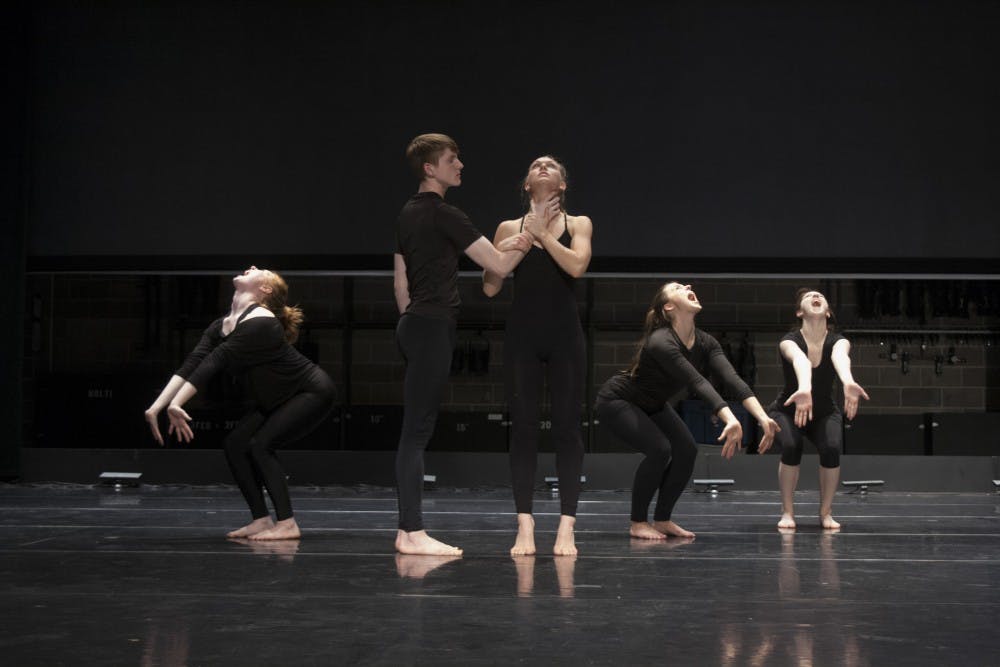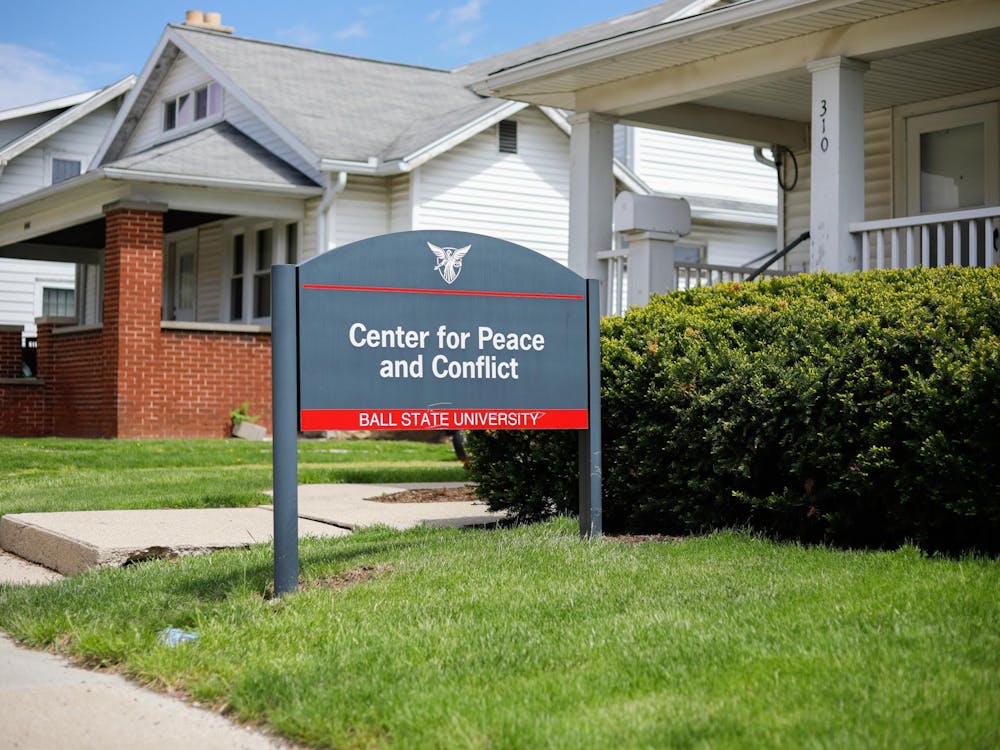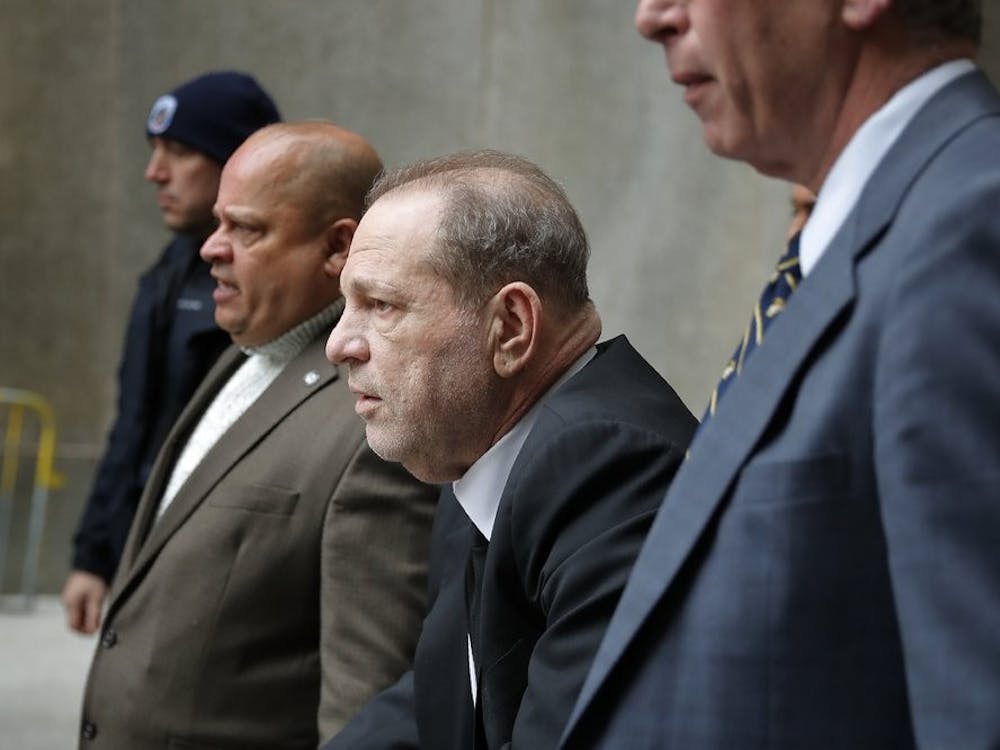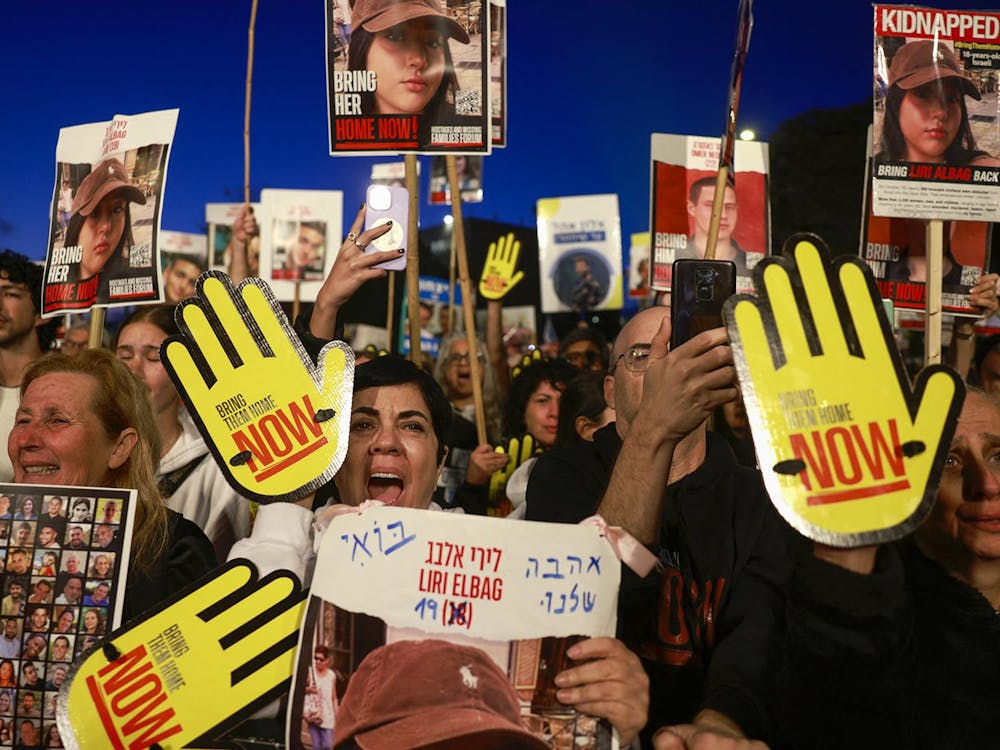"Beauty, Objectification and Violence: Dancing Towards Change" dance show began as an immersive learning project through the Virginia B. Ball Center last semester.
"Beauty, Objectification and Violence: Dancing Towards Change" dance show began as an immersive learning project through the Virginia B. Ball Center last semester, and explores themes of domestic violence, gender objectification and beauty standards.
The show will be performed at 7:30 p.m. April 27-30 in University Theatre.
In this interdisciplinary project, 12 students from varying majors collaborated to create the choreography.
Styles of dance range from contemporary to hip-hop, with a few unique elements thrown in, such as spoken word, a video montage and some theatrical moments.
This concert will be a non-stop show, with each piece flowing seamlessly into the next, pausing only for the 15-minute intermission in the middle.
As do many pieces of art, this performance holds messages that transcend the stage.
“What we are doing is very pertinent to everyone in today’s world,” said Josie Meiss, a sophomore dance major. “It’s a piece of activism in a way. We are trying to bring awareness to these issues and make people think about them.”
Artistic Director Audra Sokol said her goal with this project has been to bring more awareness about these societal issues and that “we really examine them under a stronger microscope.”
Sokol has been the artistic director for the majority of dance shows at Ball State, so the biggest challenge for her has been to step back so the students could have more control.
“With my many years of choreography, my natural role is guiding people, but I had to keep stepping further and further back to let these very young choreographers fully investigate the material and the movement,” she said. “For them, the challenge was learning because choreography was new to a lot of them. They had to get used to constructive criticism, which can be hard to take when you’re making art.”
Mallorie Baker, a junior dance major, got to experience this challenge through her own choreography piece in the Violence section, for which she collaborated with sophomore dance major Devin Hill.
This was Baker’s first time choreographing, and she said this piece is the most emotional for her in the show, as she portrays the one being abused in the duet.

From left, Rachel Wiezorek, Levi Coy, Ciara Borg, Hanna Crane, and Alyssa Washburn pose during thier rehearsal of Dancing Toward Change on April 19 in University Theatre. Dancing Toward Change is a dance piece that explores the link between cultural beauty standards and acts of violence against the human body. DN PHOTO KAITI SULLIVAN
“It’s interesting to be in that position of being abused and pushed around, but still wanting to feel loved,” she said. “I’ve never been in that position before, and going through that emotionally takes a lot out of me every time I perform it.”
Throughout this year-long process, the group partnered with community organizations like Muncie Civic Theatre and A Better Way, which helps women who have dealt with intimate partner violence.
The students visited A Better Way facilities and had the chance to talk with staff members and to hear personal testimonies from some of the women who seek refuge there.
In addition to working to portray the female perspective, Sokol described how they had to push themselves to gain a male point of view on these issues, especially since all of the dancers in the project last semester were women.
“We did purposefully try to gain a male perspective as well. They are objectified too — not as often as women are, but they definitely are victims of these issues too,” she said. “We didn’t want to come across as accusatory toward men in this show.”
It was always the original plan that their efforts would turn into a concert dance piece for this semester, and now all of that hard work is coming to fruition on the University Theatre stage.
All of the students from the Fall Semester have remained involved with the production, and seven of them are performing in the show.
Meiss remembered how the subject matter of their project became an ever-present aspect of the way she views the world around her.
“Last semester, we would talk about all three of these topics in depth, researching them. When you spend so much time talking about it, you take it with you,” she said. “We would observe the ways that these topics are prevalent in everyday life.”
In particular, Meiss noted the way one of her dances in the Violence section stands out in modern society. In this dance, she portrays a victim of psychological abuse who is being negatively affected by harmful ideas surrounding her.
“This piece speaks to how it can turn into psychological abuse just because it wears you down being a part of this society,” she said.
In addition to the three subjects indicated in the project title, the production will end with a section called “Healing.” According to Sokol, the show’s dark, deep subject matter required a positive ending filled with the hope they saw in the women at A Better Way.
“The message of hope is something we had learned from one of the women,” Sokol said. “The message she wanted to send out to people was that there is hope for change.”
Spencer Grady, who graduated from the program last May, stepped in as assistant director for this production, and it was his task to put together the Healing section. The first part of the process was to sit down with the dancers and have a discussion about what healing means to them.
“We talked for an hour and a half about how we go about healing, what it means to us, how we could represent it, how to help others heal, when not to help someone heal, healing within a community and how a community can help you in hard times, [and] faith and how that is a venue of healing for some people,” he said.
Grady expressed that he found the root of healing to be the need for empathy, especially because so many of these issues are caused by a lack of understanding and compassion for others.
“I wanted to touch on ideas of how we can feel what others feel and how that can help us change," Grady said.
Baker described the show as “an emotional roller coaster.”
“Not only are we talking about deep, heavy subjects, but we are also working to keep lighthearted and comedic elements in it,” she said. “You’ll laugh, you’ll cry, you’ll hate yourself, you’ll hate others, ... you’re going to feel some things.”
|
"Beauty, Objectification and Violence: Dancing Toward Change" dance show began as an immersive learning project through the Virginia B. Ball Center last semester. |





